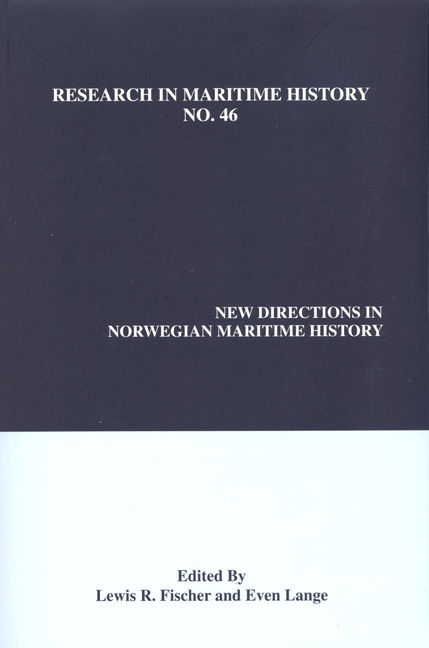Book contents
- Frontmatter
- Contents
- About the Editors
- Contributors' Notes
- Introduction
- Global Integration
- Political Issues
- Success and Failure
- “International Maritime Trade Politics and the Case of Norway, 1948-1990”
- “Inheriting Strategies: Understanding Different Approaches to Shipping during the World War I Boom in Haugesund, Norway”
- “Why Did They Fail? Business Exits among Norwegian Shipping Companies since 1970”
- “Little Man, What Now? Company Deaths in Norwegian Shipping, 1960-1980”
“The Growth of the Deep-Sea Car-Carrying Industry, 1960-2008”
from Success and Failure
- Frontmatter
- Contents
- About the Editors
- Contributors' Notes
- Introduction
- Global Integration
- Political Issues
- Success and Failure
- “International Maritime Trade Politics and the Case of Norway, 1948-1990”
- “Inheriting Strategies: Understanding Different Approaches to Shipping during the World War I Boom in Haugesund, Norway”
- “Why Did They Fail? Business Exits among Norwegian Shipping Companies since 1970”
- “Little Man, What Now? Company Deaths in Norwegian Shipping, 1960-1980”
Summary
Introduction
During the latter half of the twentieth century, the structure of international shipping was transformed drastically. Among the most important new trends was the growth of a substantial fleet of specialized vessels carrying specific cargoes such as chemicals, liquid gas, cars, forest products, refrigerated goods and passengers. By 2008, the share of specialized tonnage in world shipping had reached forty percent. Yet only thirty-three years earlier, in 1975, it had been a mere three percent. While this fundamental structural transformation of the international shipping market has been increasingly recognized in the literature, our understanding of how the process came about is still limited. This article is an attempt to improve the situation by investigating the growth of car carrying as a specialized segment within international shipping, with a particular focus on the role played by some selected Norwegian shipowners in the establishment and early growth of the industry.
Car carrying developed as a specialized segment in international shipping from the 1960s onwards. The growth coincided with the massive increase in the world trade in cars visible first in the expansion of European exports from the early 1960s and later with the development of Japan as the world's largest producer and exporter of cars. Gradually, the car carriers would also handle – and facilitate – the increasing world trade in larger vehicles, such as buses, tractors and harvesters, as well as in heavy cargoes, including machine parts, generators and forest equipment. By 2008, RoRo/car carriers constituted the second largest specialized segment in world shipping in terms of tonnage. The market was more or less controlled by five companies. Three of these – NYK, MOL and K-Line – were Japanese-owned, while the remaining two – WalleniusWilhelmsen and Höegh Autoliners – were owned by Scandinavian interests, with a dominant share held by Norwegian shipowners.
The essay traces the establishment and growth of seaborne car carrying through a two-part analysis. First, it provides a general overview of the industry, focusing on the increasing demand for seaborne car transport stemming from the expanding car manufacturing industry, the gradual development of the car-carrying ship, the evolution of the main trading patterns and the ownership structure of the fleet. The overall ambition is to understand how deep-sea car-carrying as a specialized segment evolved historically.
- Type
- Chapter
- Information
- New Directions in Norwegian Maritime History , pp. 253 - 279Publisher: Liverpool University PressPrint publication year: 2011



